SONY SS-00259 User Manual
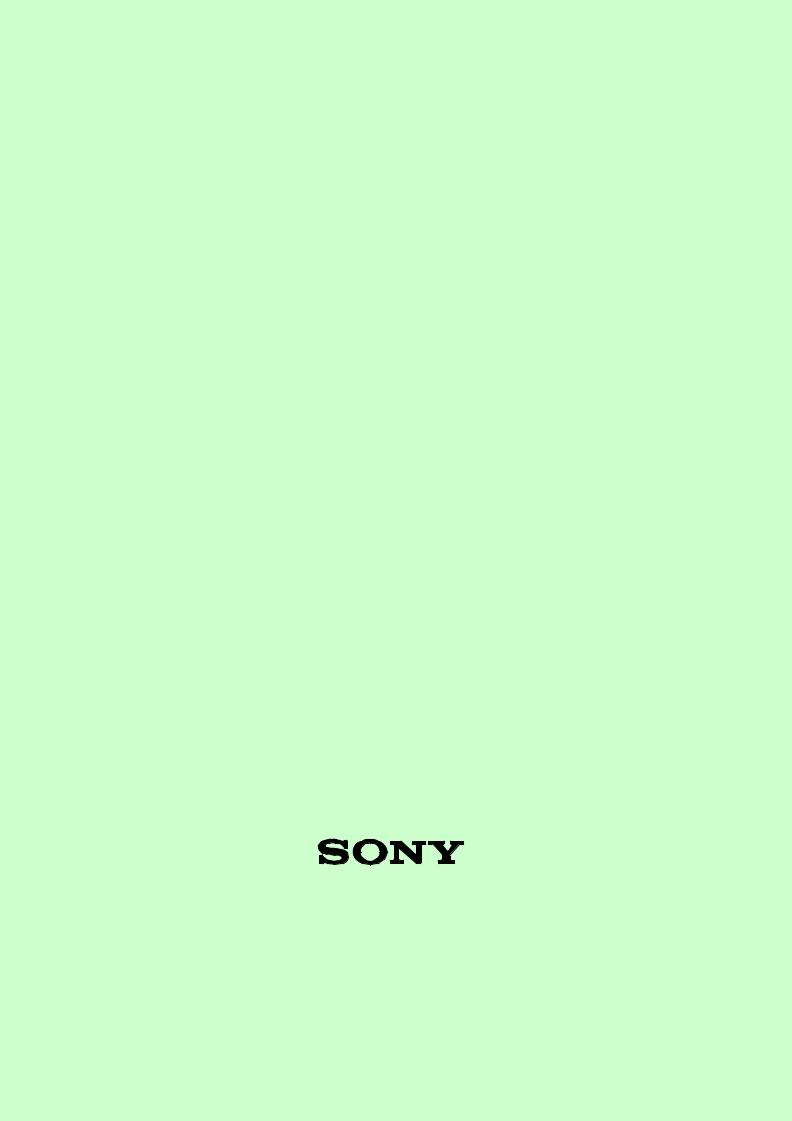
MANAGEMENT REGULATIONS FOR THE ENVIRONMENT-RELATED SUBSTANCES TO BE CONTROLLED WHICH ARE INCLUDED IN PARTS AND MATERIALS
SS-00259 for General Use, Seventh Edition

SS-00259 (7th Edition) for General Use
Terms of Use:
Copyright and all intellectual property rights in the content of this document are vested in Sony Corporation and reserved, unless otherwise indicated.
This document is the Sony Technical Standard, SS-00259 for General Use, Seventh Edition.
Copyright 2008 Sony Corp.
ALL RIGHTS RESERVED
No part of this document may be reproduced or transmitted in any form or by any means, electronic or mechanical, including photocopying, recording or by any information storage and retrieval system, without the prior written permission of Sony Corporation.
Copyright 2008 Sony Corporation

SS-00259 (7th Edition) for General Use
CONTENTS
1. |
PURPOSE..................................................................................................................................... |
1 |
|
2. |
SCOPE.......................................................................................................................................... |
1 |
|
|
2.1 |
Scope applicable to parts and materials................................................................................ |
1 |
|
2.2 |
Scope applicable to products................................................................................................. |
1 |
3. |
TERMS AND DEFINITIONS ......................................................................................................... |
2 |
|
4. |
MANAGEMENT STANDARDS FOR “ENVIRONMENT-RELATED SUBSTANCES TO BE CONTROLLED”....... |
3 |
|
|
4.1 |
“Environment-related Substances to be Controlled (‘Controlled Substances’)” .................... |
3 |
|
4.2 |
Additional rules for packaging components and materials .................................................. |
15 |
|
4.3 |
Rules for batteries (Applicable to all batteries in commercial distribution) .......................... |
18 |
APPENDIXES................................................................................................................................... |
19 |
||
Copyright 2008 Sony Corporation
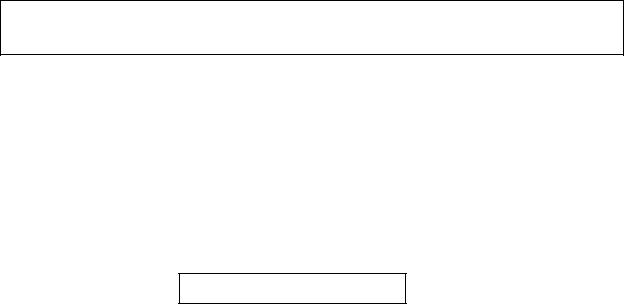
SS-00259 (7th Edition) for General Use
1.PURPOSE
With regard to the “Environment-related Substances to be Controlled (‘Controlled Substances’)” contained in the parts and devices employed in Sony electronics products, this Standard clarifies (1) banned substances,
(2)substances to be phased out, and (3) exempted substances and their uses, in order to realize the
following aims and objectives:
1)To prevent the above-mentioned substances from being used for Sony electronics products;
2)To comply with related laws and regulations;
3)To reduce the influence of the above substances upon the ecosystem; and
4)To contribute to the preservation of the global environment.
2.SCOPE
2.1Scope applicable to parts and materials
Targets are the parts, materials, and other articles that are procured by the Sony group, or by third parties to which the Sony group outsources the design and manufacture of its electronics products.
The targets need to satisfy the criteria specified in this Standard. Target parts and materials:
-Semi-finished products (e.g. modules, functional units, board assemblies, and other assembly parts)
-Parts (electrical parts, mechanical parts, semiconductor devices, PWBs, recording media, and packaging components and materials)
-Screws
-Accessories (mice, remote commanders, AC adaptors, and other accessories with which you can use products)
-Materials constituting subsidiary parts and materials (e.g. adhesives, adhesive tapes, soldering materials, etc.) used for products
-Printed materials (e.g. instruction manuals, warranty cards, additional product/parts information)
-Repair parts (The application of some repair parts for products on the market shall be followed the instructions on the separately issued notice.)
-Packaging components and materials that parts suppliers use for delivery and protection (See Section 4.2.1 “Definition of packaging components and materials” for details.)
-Batteries
2.2Scope applicable to products
1)Sony electronics products that are designed and manufactured by the Sony group for sale, loan, or distribution
2)Sony electronics products being sold and loaned or distributed with the Sony group’s logos on them, whose design and/or manufacture are outsourced to third parties
3)Third parties’ electronics products whose design and/or manufacture are outsourced to the Sony group (except when the parts and materials are specified by the third parties)
Regarding the use of substances prohibited or restricted by regional or country laws and ordinances, the laws and ordinances must be observed and followed even though the substances and their uses are not clearly regulated in this Standard.
Copyright 2008 Sony Corporation
- 1 -

SS-00259 (7th Edition) for General Use
3.TERMS AND DEFINITIONS
In this Standard, terms are defined in the following manners.
1)“Environment-related Substances to be Controlled (‘Controlled Substances’)”
Among the substances contained in parts and devices, “Environment-related Substances to be Controlled (‘Controlled Substances’)” are those which, according to Sony’s judgment, have significant environmental-impact on both humans and the global environment.
2)Management standards
To manage the above-mentioned substances, the following Levels and Exemption are used:
a)Level 1
The substances and their applications classified into this Level are those that are banned for the use in parts and materials.
b)Level 2
On the date set in each table, the substances and their applications in the respective tables shall be reclassified into Level 1.
c)Level 3
No effective date of the ban on the delivery is currently set for the substances and their applications classified into this Level. The ones under Level 3 shall be reclassified into Level 2 for banning the use of them in phases, depending on the availability of alternative parts or materials that satisfy the intended uses.
d)Exemption
The substances and their applications classified as Exemption are those not regulated by or exempted from laws, or excepted from the ‘Controlled Substances’ because of the unavailability of adequate alternative parts and materials that satisfy the intended uses.
3)Contained
“Contained” is a situation in which a substance is added to, is blended with, fills up, or adheres to:
a)The parts or devices employed in products, or
b)The materials used for the parts or devices, regardless if the situation is intentionally created or not. (When a substance is unintentionally contained in, or added to a product in a processing process,
this situation is also regarded as “Contained.”)
There are substances called Dopants (Doping Agents) that are intentionally added to manufacture semiconductor devices, etc. They are not treated as “Contained” if present in the devices in a very small amount.
4)Impurity
An “Impurity” is a substance that satisfies either or both of the following conditions:
a)One contained in a natural material, which cannot be completely removed in a refining process by technical means (i.e. natural impurities); and
b)One generated in a synthesis process, which cannot be completely removed by technical means. There are substances called “impurities,” the name of which is used to distinguish them from main materials. If they are used for the purpose of changing the characteristics of a material, they are treated as “Contained.”
Note: The ‘Controlled Substance,’ which mingles with or adheres to parts or devices as an “Impurity,” must not exceed its allowable concentration specified in this Standard.
5)Effective date of the ban on the delivery
This indicates the date on or after which Sony won’t accept the parts and/or materials specified in the corresponding columns of Table 4.2.
6)Plastics defined in this Technical Standard
Plastics refer to materials and raw materials composed of synthetic high-molecular polymers in this Standard.
More specifically, “plastics” mainly mean the following articles composed of synthetic high-molecular polymers: resins, films, adhesives, adhesive tapes, molded products, products made of synthetic rubber, and plastics made from raw materials of plant origin.
When a natural resin is synthesized with any one of the above articles, the synthetic substance is a plastic.
Copyright 2008 Sony Corporation
- 2 -
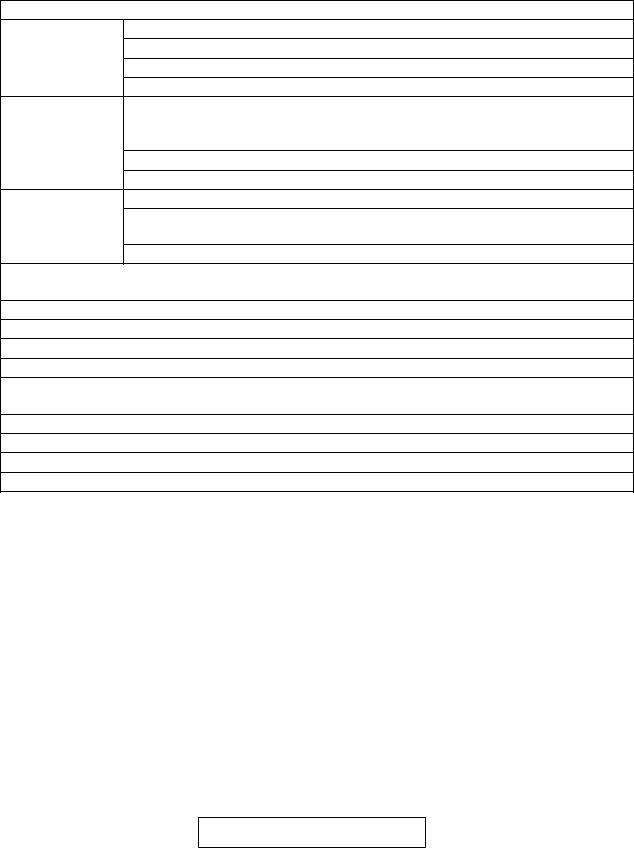
SS-00259 (7th Edition) for General Use
4.MANAGEMENT STANDARDS FOR “ENVIRONMENT-RELATED SUBSTANCES TO BE CONTROLLED”
4.1“Environment-related Substances to be Controlled (‘Controlled Substances’)”
The table below lists the “Environment-related Substances to be Controlled (‘Controlled Substances’),” defined in this Standard.
List of “Environment-related Substances to be Controlled (‘Controlled Substances’)”
Substances
Cadmium and cadmium compounds
Lead and lead compounds
Mercury and mercury compounds
Hexavalent chromium compounds
Polychlorinated biphenyls (PCB)
Polychlorinated naphthalenes (PCN)
Polychlorinated terphenyls (PCT)
Short-chain chlorinated paraffins (SCCP)
Other chlorinated organic compounds
Polybrominated biphenyls (PBB)
Polybrominated diphenylethers (PBDE) (including decabromodiphenyl ether [DecaBDE])
Other brominated organic compounds
Tributyltin compounds (TBT)
Triphenyltin compounds (TPT)
Asbestos
Specific azo compounds
Formaldehyde
Polyvinyl chloride (PVC) and PVC blends
Beryllium oxide
Beryllium copper
Specific phthalates (DEHP, DBP, BBP, DINP, DIDP, DNOP, DNHP)
Hydrofluorocarbon (HFC), Perfluorocarbon (PFC)
Perfluorooctane sulfonates (PFOS)
Specific benzotriazole
Copyright 2008 Sony Corporation
- 3 -

SS-00259 (7th Edition) for General Use
Table 4.2 Main “Targets” and “Effective date of the ban on the delivery” regarding ‘Controlled Substances’
Substances: Cadmium and cadmium compounds
All metals, alloys, inorganic compounds, organic compounds, inorganic salts, organic salts, and other substances that contain cadmium
|
|
Targets |
Effective date of the |
|
|
ban on the delivery |
|
|
|
|
|
|
|
|
|
Level 1 |
- Packaging components and materials (See 4.2.1.) |
Banned since the |
|
|
- |
The stabilizers, pigments, or dyes used for plastics (including rubber) |
establishment of this |
|
|
materials (e.g. labels, cabinets, phonograph records, cable tie, the |
Standard |
|
|
keys of remote commanders, the outer plastic resins of electrical |
|
|
|
parts, and the insulators of electrical wiring) |
|
|
- |
Paints, inks |
|
|
- |
Surface treatment (e.g. electroplating, electroless plating, etc.) and |
|
|
|
coating |
|
|
- |
Photographic films |
|
|
- |
Fluorescent lamps (small-sized ones, straight-tube ones) |
|
|
|
|
|
|
All uses except those specified in Exemption |
Banned since |
|
|
Typical examples are given below: |
January 1, 2005 |
|
|
- |
Switches, relays, breakers, DC motors, and other electrical contact |
|
|
|
points |
|
|
- Fuse elements of temperature fuses |
|
|
|
- |
Glass, and the pigments as well as dyes of glass paints (paints for |
|
|
|
glass and the pigments as well as dyes used for glass) |
|
|
- Solder (whose cadmium concentration is more than 20 ppm) |
|
|
|
- |
CdS-photocells and the phosphors contained in fluorescent display |
|
|
|
devices |
|
|
- |
Resistor elements (glass frit) |
|
|
|
|
|
|
- Parts composed of metals containing zinc (e.g. brass, hot dip |
Banned since |
|
|
|
galvanizing, etc.) whose cadmium concentration is more than 100 |
October 1, 2005 |
|
|
ppm |
|
Exemption |
- |
Cadmium plating of electrical contacts, for which high reliability is |
N/A |
|
|
required and which has no alternative materials |
|
|
- |
Cadmium in optical glass, filter glass |
|
|
|
|
|
Copyright 2008 Sony Corporation
- 4 -

SS-00259 (7th Edition) for General Use
Test objects: plastics (including rubber), paints, and inks
Allowable concentration: Less than 5 ppm
Standards for measurement
1)Sample preparation
Typical sample preparation methods are as follows.
(1)Incineration under the existence of sulfuric acid
(2)A pressurized acid decomposition method done in a sealed container (a microwave decomposition method [e.g. EPA 3052:1996, EN 13346:2000])
(3)An acid decomposition method under the existence of nitric acid, hydrogen-peroxide water and hydrochloric acid (e.g. EPA3050B Rev.2:1996)
(4)A wet decomposition method under the existence of sulfuric acid, nitric acid, and hydrogen-peroxide
water (e.g. BS EN 1122:2001)
Note: In the process of sample preparation, precipitates must be completely dissolved by some technical means (e.g. alkali fusion).
2)Measurement methods
Typical measurement methods are as follows.
(1)Inductively Coupled Plasma-Atomic (Optical) Emission Spectroscopy (ICP-AES [ICP-OES]) (e.g. EN ISO 11885:1998)
(2)Atomic Absorption Spectroscopy (AAS) (e.g. EN ISO 5961:1995)
(3)Inductively Coupled Plasma-Mass Spectroscopy (ICP-MS)
-If a combination of a sample preparation method and a measurement method can guarantee that the limit of quantification for cadmium is less than 5 ppm, the combination is also applicable.
-Both cadmium and lead can be simultaneously analyzed by each of the measurement methods (except for
AAS) mentioned above.
Note: The extraction methods (including EN71-3:1994, ASTM F963-96a, ASTM F963-03, ASTM D 5517, and ISO 8124-3) must not be applied to the sample preparation methods specified in this Standard.
When performing measurements based on JIS K 0102, “Testing methods for industrial wastewater,” which refers only to measurement methods in section 55, sample preparation methods that are actually applied must be specified along with that JIS standard.
Substances: Lead and lead compounds
All metals, alloys, inorganic compounds, organic compounds, inorganic salts, organic salts, and other substances that contain lead
|
|
Targets |
Effective date of the |
|
|
ban on the delivery |
|
|
|
|
|
|
|
|
|
Level 1 |
- Packaging components and materials (See 4.2.1.) |
Banned since the |
|
|
- The paints, and inks containing lead, which are used for PWBs |
establishment of this |
|
|
|
|
Standard |
|
|
|
|
|
- |
Surface coatings (plating) for the external electrodes, lead wires, and |
Banned since April 1, |
|
|
other areas of parts (e.g. electrical parts, semiconductor devices, and |
2004 |
|
|
heat sinks) |
|
|
- |
The stabilizers, pigments, and dyes contained in the plastic (including |
|
|
|
rubber) materials that are used for outer and exposed areas of the |
|
|
|
following articles: mice, devices, AC adaptors, connection cords, |
|
|
|
remote commanders, and power supply cords |
|
|
- The paints and inks used for outer and exposed areas of devices |
|
|
|
|
|
|
Copyright 2008 Sony Corporation
- 5 -

|
|
|
|
|
SS-00259 (7th Edition) for General Use |
|||
|
|
|
|
|
|
|
||
Level 1 |
All uses except those specified in Level 3 and Exemption |
Banned since |
|
|||||
|
Typical examples are given below: |
|
|
January 1, 2005 |
|
|||
|
- |
The surface coatings for the external electrodes, lead wires, etc. of |
|
|
||||
|
|
the parts contained in AC adaptors, remote commanders, |
|
|
||||
|
|
semiconductor devices, etc. |
|
|
|
|
||
|
- |
Leaded solder that meets both of the following conditions: 1) lead |
|
|
||||
|
|
content is less than 85 wt%; and 2) lead content is more than |
|
|
||||
|
|
1000 ppm |
|
|
|
|
||
|
- |
All kinds of alloys (including solder materials) whose individual lead |
|
|
||||
|
|
concentrations exceed their allowable ones provided in the table at |
|
|
||||
|
|
the bottom of Exemption below. (*1) |
|
|
||||
|
- |
The stabilizers, pigments, and dyes contained in the plastic (including |
|
|
||||
|
|
rubber) materials that are used for areas (excluding outer and |
|
|
||||
|
|
exposed ones) of the following articles: mice, devices, AC adaptors, |
|
|
||||
|
|
connection cords, remote commanders, and power supply cords |
|
|
||||
|
- The paints and inks used for areas other than the outer and exposed |
|
|
|||||
|
|
ones of devices |
|
|
|
|
||
|
|
|
|
|
|
|
|
|
|
- |
Electroless plating films such as electroless nickel plating and |
Banned since |
|
||||
|
|
electroless gold plating whose lead content is more than 1000 ppm |
February 1, 2006 |
|
||||
|
|
|
|
|
|
|
|
|
Level 3 |
- |
|
Electroless plating films such as electroless nickel plating and |
N/A |
|
|||
|
|
electroless gold plating whose lead content is 1000 ppm or less |
|
|
||||
|
|
|
|
|||||
Exemption |
- High melting temperature type solder (i.e. lead based alloys |
N/A |
|
|||||
|
|
containing 85 wt% or more) |
|
|
|
|
||
|
- |
Electronic ceramic parts (e.g. piezoelectric devices, dielectric ones, |
|
|
||||
|
|
and magnetic ones [ferrites]) |
|
|
|
|
||
|
- |
Optical glass, filter glass |
|
|
|
|
||
|
- Glass of cathode ray tubes, glass of electronic components, and glass |
|
|
|||||
|
|
of fluorescent tubes |
|
|
|
|
||
|
|
The above glass materials include adhesives, resistor elements, glass |
|
|
||||
|
|
frit, conductive pastes (silver or copper ones), and sealing materials. |
|
|
||||
|
- Solder consisting of more than two elements for the connection |
|
|
|||||
|
|
between the pins and the package of microprocessors with a lead |
|
|
||||
|
|
content of more than 80 wt% and less than 85 wt% |
|
|
||||
|
- |
Solder to complete a viable electrical connection between |
|
|
||||
|
|
semiconductor die and carrier within integrated circuit Flip Chip |
|
|
||||
|
|
packages |
|
|
|
|
||
|
|
|
(*1) Allowable lead concentrations |
|
|
|||
|
|
|
|
|
|
|
|
|
|
|
|
Type of alloy |
|
Allowable lead concentration |
|
|
|
|
|
|
|
|
|
|
|
|
|
|
|
Steel |
|
up to 0.35 wt% |
|
|
|
|
|
|
|
|
|
|
|
|
|
|
|
Aluminum alloy |
|
up to 0.4 wt% |
|
|
|
|
|
|
|
|
|
|
|
|
|
|
|
Copper alloys (including |
|
up to 4 wt% |
|
|
|
|
|
|
brass and phosphor bronze) |
|
|
|
|
|
|
|
|
|
|
|
|
|
|
|
|
|
Solder (*2) |
|
up to 1000 ppm |
|
|
|
|
|
|
|
|
|
|
||
|
(*2) Allowable concentration of lead contained in conductive materials |
|
|
|||||
|
|
|
of solder for anisotropic conductive film (ACF) and anisotropic |
|
|
|||
|
|
|
conductive paste (ACP) should be less than 1000 ppm. |
|
|
|||
|
|
|
|
|
|
|
|
|
Copyright 2008 Sony Corporation
- 6 -

SS-00259 (7th Edition) for General Use
Test objects: plastics (including rubber), paints, and inks
Allowable concentration: Less than 100 ppm
Standards for measurement
1)Sample preparation
Typical sample preparation methods are as follows.
(1)Incineration under the existence of sulfuric acid
(2)A pressurized acid decomposition method done in a sealed container (a microwave decomposition method [e.g. EPA 3052:1996, EN 13346:2000])
(3)An acid decomposition method under the existence of nitric acid, hydrogen-peroxide water, and hydrochloric acid (e.g. EPA 3050B Rev.2:1996)
(4)A wet decomposition method under the existence of nitric acid and hydrogen-peroxide water Note: In the process of sample preparation, precipitates must be completely dissolved by some technical
means (e.g. alkali fusion).
2)Measurement methods
Typical measurement methods are as follows.
(1)Inductively Coupled Plasma-Atomic (Optical) Emission Spectroscopy (ICP-AES [ICP-OES]) (e.g. EN ISO 11885:1998)
(2)Atomic Absorption Spectroscopy (AAS) (e.g. EN ISO 5961:1995)
(3)Inductively Coupled Plasma-Mass Spectroscopy (ICP-MS)
-If a combination of a sample preparation method and a measurement method can guarantee that the limit of quantification for lead is less than 30 ppm, the combination is also applicable.
-Both cadmium and lead can be simultaneously analyzed by each of the measurement methods (except for AAS) mentioned above.
Note: The extraction methods (including EN71-3:1994, ASTM F963-96a, ASTM F963-03, ASTM D 5517, and ISO 8124-3) must not be applied to the sample preparation methods specified in this Standard.
EN 1122 is not applicable to the sample preparation methods for lead.
When performing measurements based on JIS K 0102, “Testing methods for industrial wastewater,” which refers only to measurement methods in section 54, sample preparation methods that are actually applied must be specified along with that JIS standard.
Substances: Mercury and mercury compounds
All metals, alloys, inorganic compounds, organic compounds, inorganic salts, organic salts, and other substances that contain mercury
|
|
Targets |
Effective date of the |
|
|
ban on the delivery |
|
|
|
|
|
|
|
|
|
Level 1 |
- Packaging components and materials (See 4.2.1.) |
Banned since the |
|
|
- |
Paints, and inks |
establishment of this |
|
- Hour meters |
Standard |
|
|
- The relays, switches, or sensors whose contacts contain mercury |
|
|
|
- Mercury or its compounds mixed in plastics |
|
|
|
|
|
|
|
- Small-sized fluorescent lamps whose mercury content (per lamp) is 5 |
Banned since |
|
|
|
mg or more |
January 1, 2005 |
|
- |
Straight-tube fluorescent lamps whose mercury content (per lamp) is |
|
|
|
5 mg or more |
|
|
- |
All uses except those specified in Exemption |
|
|
|
|
|
Exemption |
- Lamps other than small-sized fluorescent ones and straight-tube |
N/A |
|
|
|
fluorescent ones (e.g. high-pressure mercury lamps) |
|
|
- Small-sized fluorescent lamps whose mercury content (per lamp) is |
|
|
|
|
less than 5 mg |
|
|
- |
Straight-tube fluorescent lamps whose mercury content (per lamp) is |
|
|
|
less than 5 mg |
|
|
|
|
|
Copyright 2008 Sony Corporation
- 7 -

SS-00259 (7th Edition) for General Use
Substances: Hexavalent chromium compounds
All inorganic compounds, organic compounds, inorganic salts, organic salts, and other substances that contain hexavalent chromium
|
|
Targets |
Effective date of the |
|
|
ban on the delivery |
|
|
|
|
|
|
|
|
|
Level 1 |
- Packaging components and materials (See 4.2.1.) |
Banned since the |
|
|
|
|
establishment of this |
|
|
|
Standard |
|
|
|
|
|
- |
Constituents of parts or materials (e.g. inks, paints, additives, etc.) |
Banned since |
|
- |
Residues in the surfaces of screws, steel sheets, etc. that are processed |
January 1, 2005 |
|
|
with plating or conversion coating |
|
|
|
|
|
Substances: Polychlorinated biphenyls (PCB), polychlorinated naphthalenes (PCN), polychlorinated terphenyls (PCT)
|
|
Targets |
Effective date of the |
|
|
ban on the delivery |
|
|
|
|
|
|
|
|
|
Level 1 |
- |
All uses (e.g. capacitors, lubricants, insulating oils, transformers |
Banned since the |
|
|
containing oil, paints, and flame retardants in plastics) |
establishment of this |
|
|
|
Standard |
|
|
|
|
|
|
|
|
|
|
Substances: Short-chain chlorinated paraffins (SCCP) |
|
|
|
||
Short-chain chlorinated paraffins with carbon chain length;10-13 |
|
||
|
|
|
|
|
|
Targets |
Effective date of the |
|
|
ban on the delivery |
|
|
|
|
|
|
|
|
|
Level 1 |
- The cabinets of products (including accessories) and PWBs |
Banned since the |
|
|
|
|
establishment of this |
|
|
|
Standard |
|
|
|
|
|
- All uses other than the above |
Banned since |
|
|
|
|
February 1, 2006 |
|
|
|
|
|
|
|
|
|
|
Substances: Other chlorinated organic compounds |
|
|
|
|
|
|
|
Targets |
Effective date of the |
|
|
ban on the delivery |
|
|
|
|
|
|
|
|
|
Level 3 |
- |
The plasticizers or flame retardants contained in plastics, and the flame |
N/A |
|
|
retardants used for PWBs |
|
|
|
|
|
Copyright 2008 Sony Corporation
- 8 -

|
|
SS-00259 (7th Edition) for General Use |
||
|
|
|
|
|
|
|
Substances: Polybrominated biphenyls (PBB) |
|
|
|
|
|
|
|
|
|
Targets |
Effective date of the |
|
|
|
ban on the delivery |
|
|
|
|
|
|
|
|
|
|
|
|
Level 1 |
- |
All uses (e.g. flame retardants contained in plastics) |
Banned since the |
|
|
|
|
establishment of this |
|
|
|
|
Standard |
|
|
|
|
|
|
|
||||
Substances: Polybrominated diphenylethers (PBDE) (including decabromodiphenyl ether [DecaBDE]) |
|
|||
|
|
|
|
|
|
|
Targets |
Effective date of the |
|
|
|
ban on the delivery |
|
|
|
|
|
|
|
|
|
|
|
|
Level 1 |
- |
All uses (e.g. flame retardants contained in plastics) |
Banned since the |
|
|
|
|
establishment of this |
|
|
|
|
Standard |
|
|
|
|
|
|
|
- The parts manufactured using the molding dies, which were made in or |
Banned since |
|
|
|
|
before December 2002 (Applicable only to the bodies of the displays and |
January 1, 2005 |
|
|
|
TV sets shipped to countries and regions other than European ones) |
|
|
|
|
The parts whose molding dies have been made since January 2003 must |
|
|
|
|
not contain PBDE. |
|
|
|
|
|
|
|
|
|
|
|
|
|
|
Substances: Other brominated organic compounds |
|
|
|
|
|
|
|
|
|
Targets |
Effective date of the |
|
|
|
ban on the delivery |
|
|
|
|
|
|
|
|
|
|
|
|
Level 3 |
- The flame retardants contained in plastics, or used for PWBs |
N/A |
|
|
|
|
|
|
|
|
|
|
||
|
|
Substances: Tributyltin compounds (TBT) and triphenyltin compounds (TPT) |
|
|
|
|
|
|
|
|
|
Targets |
Effective date of the |
|
|
|
ban on the delivery |
|
|
|
|
|
|
|
|
|
|
|
|
Level 1 |
- |
All uses (e.g. paints, inks, preservatives, and fungicides) |
Banned since the |
|
|
|
|
establishment of this |
|
|
|
|
Standard |
|
|
|
|
|
|
|
|
|
|
|
|
|
Substances: Asbestos |
|
|
|
|
|
|
|
|
|
Targets |
Effective date of the |
|
|
|
ban on the delivery |
|
|
|
|
|
|
|
|
|
|
|
|
Level 1 |
- |
All uses (e.g. insulators and fillers) |
Banned since the |
|
|
|
|
establishment of this |
|
|
|
|
Standard |
|
|
|
|
|
|
Copyright 2008 Sony Corporation
- 9 -

SS-00259 (7th Edition) for General Use
Substances: Specific azo compounds
Azodyes that form any of the amine compounds listed in Table 4.2a through the decomposition methods cited in the EU Directive 76/769/EEC and amine compounds in Table 4.2a
|
Targets |
Effective date of the |
|
ban on the delivery |
|
|
|
|
|
|
|
Level 1 |
The substances which are used in parts or articles that may come into direct |
Banned since the |
|
and prolonged contact with the human skin (e.g. belts, straps, ear phones, |
establishment of this |
|
head phones, and shoulder pads for bags) |
Standard |
Level 3 |
The parts or articles that do not come into continuous contact with the |
N/A |
|
human skin (e.g. cushions, mice, remote commanders, and carrying bags) |
|
Test methods (for reference)
The methods for decomposing azo compounds and then extracting amines are as follows.
1)EN 14362-1:2003, “Textiles-Methods for the determination of certain aromatic amines derived from azo colorants
-Part 1: Detection of the use of certain azo colorants accessible without extraction”
2)CEN ISO/TS 17234:2003, “Leather-Chemical tests - Determination of certain azo colorants in dyed leathers”
3)EN 14362-2:2003, “Textiles-Methods for the determination of certain aromatic amines derived from azo colorants
-Part 2: Detection of the use of certain azo colorants accessible by extracting the fibres”
|
Table 4.2a List of specific amine compounds |
|
|
CAS No. |
Amine compounds |
|
|
92-67-1 |
4-aminodiphenyl |
|
|
92-87-5 |
benzidine |
|
|
95-69-2 |
4-chloro-o-toluidine |
|
|
91-59-8 |
2-naphthylamine |
97-56-3 |
o-aminoazotoluene |
99-55-8 |
2-amino-4-nitrotoluene |
|
|
106-47-8 |
p-chloroaniline |
|
|
615-05-4 |
2,4-diaminoanisole |
|
|
101-77-9 |
4,4’-diaminodiphenylmethane |
|
|
91-94-1 |
3,3’-dichlorobenzidine |
119-90-4 |
3,3’-dimethoxybenzidine |
119-93-7 |
3,3’-dimethylbenzidine |
|
|
838-88-0 |
3,3’-dimethyl-4,4’-diaminodiphenylmethane |
|
|
120-71-8 |
p-cresidine |
|
|
101-14-4 |
4,4’-methylene-bis-(2-chloroanilene) |
|
|
101-80-4 |
4,4’-oxideaniline |
139-65-1 |
4,4’-thiodianiline |
95-53-4 |
o-toluidine |
|
|
95-80-7 |
2,4-toluylenediamine |
|
|
137-17-7 |
2,4,5-trimethylaniline |
|
|
90-04-0 |
o-anisidine |
|
|
60-09-3 |
4-aminoazobenzene |
Copyright 2008 Sony Corporation
- 10 -

SS-00259 (7th Edition) for General Use
Substance: Formaldehyde
|
Targets |
Effective date of the |
|
ban on the delivery |
|
|
|
|
|
|
|
Level 1 |
- The wooden products made from fiberboard, particleboard, or plywood, |
Banned since the |
|
which are employed in products for import into Europe (e.g. speakers |
establishment of this |
|
and racks) |
Standard |
|
|
|
|
- The wooden products made from fiberboard, particleboard, or plywood, |
Banned since |
|
which are employed in products for destinations other than Europe (e.g. |
January 1, 2005 |
|
speakers and racks) |
|
|
|
|
Reference value (emission content): Obtain the value by any one of the following methods. 1) [With a chamber method]
Concentration in the air: Equal to or less than 0.1 ppm (or 0.124 mg/m3) in an air-tight test chamber whose volume is 12 m³, 1 m³, or 0.0225 m³
2) [With a perforator method]
- Equal to or less than 6.5 mg in 100 g of a particleboard without a surface treatment (the average value during six months)
- Equal to or less than 7.0 mg in 100 g of a fiberboard without a surface treatment (the average value
|
during six months) |
|
- |
Equal to or less than 8.0 mg in 100 g of a particleboard/fiberboard without a surface treatment (the |
|
|
value derived from the one-time measurement based on EN120) |
|
3) [With a desiccator method] |
||
- |
Average content: |
0.5 mg/l or less |
- Maximum content: |
0.7 mg/l or less |
|
|
(Use N=2 to check the average and maximum values.) |
|
Measurement methods:
- A chamber method specified in EN 717-1:2004 (Wood based panels; determination of formaldehyde release; formaldehyde emission by the chamber method)
- A perforator method specified in EN 120 (Wood based panels; determination of formaldehyde content; extraction method called perforator method; EN 120:1992)
- A desiccator method specified in JIS A 5905 (Fibreboards) and JIS A 5908 (Particleboards)
Substances: Polyvinyl chloride (PVC) and PVC blends
|
Targets |
Effective date of the |
|
ban on the delivery |
|
|
|
|
|
|
|
Level 1 |
- Substrates for FeliCa contactless IC cards |
Banned since before |
|
* For reference, the targets have never contained PVC or PVC blends. |
the establishment of |
|
|
this Standard |
|
|
|
|
- Coating agents and fabrics for the carrying bags, carrying cases, and |
Banned since the |
|
carrying pouches, which are designed for use with personal computers, |
establishment of this |
|
digital cameras, camcorders, and portable audio products (excluding |
Standard |
|
those for professional use) |
|
|
- Cable ties used for accessories and connecting cords |
Banned since July 1, |
|
|
2002 |
|
|
|
|
- Packaging components and materials to protect, contain, or transport |
Banned since |
|
products or supplied accessories (e.g. bags, adhesive tapes, cartons, |
January 1, 2005 |
|
and blister packs) |
|
|
- Heat shrink tubes |
Banned since April |
|
|
1, 2005 |
|
|
|
|
- Flexible flat cables (FFC) |
Banned since April |
|
- Sheets and laminates used for exterior of wooden speakers |
1, 2007 |
|
- Insulating plates, decorative panels, labels, sheets, and laminates |
|
|
|
|
Copyright 2008 Sony Corporation
- 11 -

SS-00259 (7th Edition) for General Use
Substances: Polyvinyl chloride (PVC) and PVC blends
|
|
Targets |
Effective date of the |
|
|
ban on the delivery |
|
|
|
|
|
|
|
|
|
Level 3 |
- Connection cords for wearable equipment (e.g. cables for ear phones, |
N/A |
|
|
|
head phones, and ear microphones) |
|
|
- |
Coating for insulation and protection used for the inside or outside of |
|
|
|
devices, insulating tubes, carrying belts, spacers, holders, covers, |
|
|
|
ducts, etc. |
|
|
- |
Power supply cords (including ones with some or all of the following: |
|
|
|
plugs, connectors, or cord bushes) designed for use in Japan, the |
|
|
|
U.S., and Canada (2P and 3P) |
|
|
- |
Parts consisting of wires (e.g. connectors with cords) and wires used |
|
|
|
for internal wiring (e.g. motor leads) |
|
|
- Connection cords (e.g. connection cords for USB or i.LINK, and video |
|
|
|
|
cords, AC adaptors secondary leads, flat wires, multi core cables, |
|
|
|
speaker cords, etc.) |
|
|
- |
Harnesses and processing wires (e.g. coaxial cables, flat wires, |
|
|
|
double insulation wires, and shielded wires) |
|
|
- |
Coating agents and fabrics for the carrying bags, carrying cases, and |
|
|
|
carrying pouches, which are designed for exclusive use with |
|
|
|
professional-electronics products |
|
|
- Developing papers |
|
|
|
- |
Insulation caps for capacitors, power supply switches, and fuses |
|
|
- Trays, magazine sticks, reels, embossed carrier tapes used by parts |
|
|
|
|
suppliers for parts packaging |
|
|
- |
Suction cups for mounting in-vehicle products |
|
|
- |
Wiring clip used for the inside of devices (made of polyvinyl |
|
|
|
chloride-coated metal) |
|
|
|
Other parts except those classified into Levels 1 and Exemption |
|
|
|
|
|
Exemption |
- Binder for resins |
N/A |
|
|
- |
Polyvinyl electrical wires for high voltage |
|
|
- |
Insulating tapes |
|
|
- |
Speaker grilles |
|
|
- Power supply cords designed for use in countries and regions other |
|
|
|
|
than Japan, the U.S., and Canada |
|
|
- |
Parts that are not classified into Levels 1 and 3, and are composed of |
|
|
|
vinyl chloride copolymers or blends of PVC and other polymers |
|
|
- |
Transformer leads whose joint is fixed by varnish impregnation |
|
|
- |
Curl cords |
|
|
- Extra fine electrical wires that are AWG (American Wire Gauge) 36 or |
|
|
|
|
more |
|
|
- Professional cables for which general-purpose ones cannot be |
|
|
|
|
substituted (e.g. cables for broadcast cameras and microphone |
|
|
|
cables) |
|
|
|
|
|
Copyright 2008 Sony Corporation
- 12 -
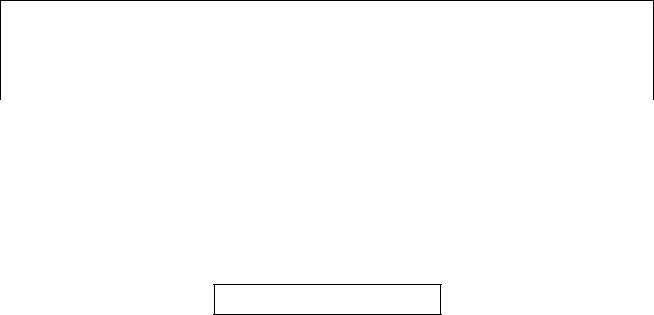
|
|
SS-00259 (7th Edition) for General Use |
||
|
|
|
|
|
|
|
Substances: Beryllium oxide |
|
|
|
|
|
|
|
|
|
Targets |
Effective date of the |
|
|
|
ban on the delivery |
|
|
|
|
|
|
|
|
|
|
|
|
Level 1 |
- |
All uses except those specified in Level 3 |
April 1, 2008 |
|
|
|
|
|
|
Level 3 |
- |
Specific uses which have no alternative materials |
|
|
|
|
|
|
|
|
|
|
|
|
|
|
Substances: Beryllium copper |
|
|
|
|
|
|
|
|
|
Targets |
Effective date of the |
|
|
|
ban on the delivery |
|
|
|
|
|
|
|
|
|
|
|
|
Level 3 |
- All uses |
N/A |
|
|
|
|
|
|
|
|
|
|
||
|
|
Substances: Specific phthalates (DEHP, DBP, BBP, DINP, DIDP, DNOP, DNHP) |
|
|
|
|
|
|
|
|
|
All Specific phthalates in Table 4.2b |
|
|
|
|
|
|
|
|
|
Targets |
Effective date of the |
|
|
|
ban on the delivery |
|
|
|
|
|
|
|
|
|
|
|
|
Level 3 |
- |
Plasticizer in polyvinyl chloride resin used for cable coating, cord coating, |
N/A |
|
|
|
plugs and connecters |
|
|
|
|
|
|
|
Table 4.2b List of specific phthalates (phthalic esters)
Abbreviation |
CAS No. |
Specific phthalates |
|
|
|
|
|
DEHP |
117-81-7 |
Di (2-ethylhexyl) phthalate |
|
|
|
|
|
DBP |
84-74-2 |
Di-n-butyl phthalate |
|
|
|
|
|
BBP |
85-68-7 |
Butyl benzyl phthalate |
|
|
|
|
|
DINP |
28553-12-0 |
Diisononyl phthalate (technical mixture) |
|
68515-48-0 |
|||
|
|
||
|
|
|
|
DIDP |
26761-40-0 |
Diisodecyl phthalate (technical mixture) |
|
68515-49-1 |
|||
|
|
||
|
|
|
|
DNOP |
117-84-0 |
Di-n-octyl phthalate |
|
|
|
|
|
DNHP |
84-75-3 |
Di-n-hexyl phthalate |
|
|
|
|
Substances: Hydrofluorocarbon (HFC), Perfluorocarbon (PFC)
|
Targets |
Effective date of the |
|
ban on the delivery |
|
|
|
|
|
|
|
Level 1 |
- All uses installed into product (e.g. refrigerant and insulation) |
Banned since April |
|
|
1, 2008 |
|
|
|
Copyright 2008 Sony Corporation
- 13 -

|
|
SS-00259 (7th Edition) for General Use |
||
|
|
|
|
|
|
|
Substances: Perfluorooctane sulfonates (PFOS) |
|
|
|
|
|
|
|
|
|
Targets |
Effective date of the |
|
|
|
ban on the delivery |
|
|
|
|
|
|
|
|
|
|
|
|
Level 1 |
- Materials whose PFOS concentration is 0.1 wt% or more |
Banned since April |
|
|
|
- Textiles or other coated materials whose amount of PFOS is 1 µg/m2 |
1, 2008 |
|
|
|
|
or more of the coated material |
|
|
|
Typical examples are given below: |
|
|
|
|
- |
Electroplating, paint, colorant, dye, materials coated with water |
|
|
|
|
repellant agent, oil repellant agent, antifouling agent (e.g. textile, film, |
|
|
|
|
paper, leather), fluoropolymer coating, adhesive, and sealant |
|
|
|
|
|
|
|
Exemption |
- |
Photographic coatings applied to films, papers, or printing plates |
|
|
|
- |
Photoresists or anti reflective coatings for photolithography processes |
|
|
|
|
|
|
|
|
|
|
|
|
|
|
Substance: Specific benzotriazole |
|
|
|
|
|
|
|
|
|
2-(3',5'-Di-tert-butyl-2'-hydroxyphenyl)benzotriazole (CAS No. 3846-71-7) |
|
|
|
|
|
|
|
|
|
Targets |
Effective date of the |
|
|
|
ban on the delivery |
|
|
|
|
|
|
|
|
|
|
|
|
Level 1 |
Ultraviolet protectants and ultraviolet absorbers applied to decorative |
Banned since April |
|
|
|
laminate, developing papers, molded plastic parts |
1, 2008 |
|
|
|
|
|
|
|
Copyright 2008 Sony Corporation
- 14 -

SS-00259 (7th Edition) for General Use
4.2Additional rules for packaging components and materials
4.2.1Definition of “packaging components and materials”
Packaging components and materials are defined as products made from any materials and components of any nature to be used for the containment, protection, handling, delivery and presentation of goods, from raw materials to processed goods from the producer to the user or consumer.
Note: The definition excludes the components and materials for the returnable boxes, which are reused or recycled under the control of carriers or parts suppliers, and are not disposed of by end-users or Sony.
Table 4.3 Additional rules for packaging components and materials
Substances: Heavy metals (cadmium, lead, mercury, and hexavalent chromium)
Articles that satisfy not only the rules specified in Table 4.2, but also the following conditions determined by the regulations of relevant laws
|
Targets |
Effective date of the |
|
ban on the delivery |
|
|
|
|
|
|
|
Level 1 |
- All packaging components and materials |
Banned since the |
|
Some examples are given in PACKAGING of Table 4.3a. |
establishment of this |
|
|
Standard |
Exemption |
- Cartons for returnable boxes owned by carriers or parts suppliers |
N/A |
|
|
|
Allowable concentrations
-“Less than 100 ppm” is determined as the allowable total-concentration of four heavy metals (cadmium, lead, mercury, and hexavalent chromium) contained in each part, ink, or paint that constitutes a package. Regarding allowable concentrations of cadmium and lead contained in plastics (including rubber), paints, and inks, however, regulations for “Cadmium and cadmium compounds” and “Lead and lead compounds” must also be satisfied.
(Typical plastic parts: handles, cushions, films, reels, adhesive tapes, magazine sticks [including stoppers], polyvinyl bags, bands, and trays)
For hexavalent chromium:
1)First analyze total chromium content and verify that the total concentration of cadmium, lead, mercury and total chromium is less than 100 ppm. When analyzing, the same sample preparation methods as those used for cadmium and lead are applicable.
2)If this total concentration is more than 100 ppm, verify that the sum of the cadmium, lead and mercury concentration is less than the 100 ppm limit. When the sum of the cadmium, lead and mercury concentration is less than the 100 ppm limit, analyze and confirm that no hexavalent chromium is present, using the standard methods for detecting hexavalent chromium provided in Table4.3.
Standards for four heavy metals measurement
1)Sample preparation
For cadmium and lead, follow the methods respectively specified in Table 4.2 (*3) (*4). For total chromium, follow the methods specified in Table 4.2 (*3).
For mercury, typical test methods are as follows.
(1)A pressurized acid decomposition method done in a sealed container (a microwave decomposition method [e.g. EPA 3052:1996])
(2)A heating evaporation-cold-vapor mercury-atomic-absorption method (Full-automatic test equipment is marketed.)
(3)A wet decomposition method (e.g. Kjeldahl method) in which a decomposition flask with a reflux
condenser is used to decompose mercury by sulfuric acid or nitric acid
Note: In the process of sample preparation, particular attention is required to avoid mercury sublimation, and precipitates must be completely dissolved by some technical means.
2)Measurement methods
Regarding the measurement of cadmium; lead; and total-chromium concentrations, follow the methods specified in Table 4.2 (*3) (*4).
Regarding the measurement of mercury concentrations, follow the same methods as cadmium and lead specified in Table 4.2 (*3) (*4).
When the mercury concentration is predicted to be low, you are advised to use one of the following methods.
(1)A reduction-evaporation atom-absorption method
(2)ICP-AES (ICP-OES) method with a hydride-generation apparatus
(3)ICP-MS method with a hydride-generation apparatus
Copyright 2008 Sony Corporation
- 15 -

SS-00259 (7th Edition) for General Use
Standard methods for detecting hexavalent chromium:
Note: Standard methods specified hereafter are applicable when total concentration of the four elements of cadmium, lead, mercury, and total chromium in packaging components and materials is 100 ppm or more.
Detection methods:
1)Sample preparation
-Extraction methods such as boiling water extraction and alkaline extraction (e.g. EPA 3060A)
2)Measurement method
-Ultraviolet-Visible (UV/VIS) Spectroscopy (e.g. EPA 7196A)
-If a combination of a sample preparation method and a measurement method can guarantee the following limits of quantification, the combination is also available.
(1)Less than 5 ppm for mercury
(2)Less than 5 ppm for cadmium
(3)Less than 5 ppm for the total chromium
(4)Less than 30 ppm for lead
-Cadmium, lead, and total chromium can be simultaneously analyzed by each of the measurement methods (except for AAS).
(*3) Refer to “Test objects: plastics (including rubber), paints, and inks,” “Substances: Cadmium and cadmium compounds,” in Table 4.2 “Main “Targets” and “Effective date of the ban on the delivery” regarding ‘Controlled Substances.’”
(*4) Refer to “Test objects: plastics (including rubber), paints, and inks,” “Substances: Lead and lead compounds,” in Table 4.2 “Main “Targets” and “Effective date of the ban on the delivery” regarding ‘Controlled Substances.’”
Table 4.3a Illustrative examples of PACKAGING components/materials and NOT PACKAGING components/materials
Note: The following lists provide some examples of the products, which we categorize as “packaging” as well as “not packaging,” to serve as a reference. They are not intended to include all products in both categories.
For consumerand professional-electronics products (used for transporting Sony electronics products)
PACKAGING
1. |
Carton |
Including master carton and sub-master carton made from any materials. |
|
2. |
Cushion |
|
|
3. |
Protection bag, protection sheet |
Such as made from foamed plastic or nonwoven fabric |
|
4. |
Plastic bag |
|
|
5. |
Envelope |
Such as used for warranty card |
|
6. |
Blister pack |
|
|
7. |
Film |
Including protection films such as used for the LCD displays |
|
|
|
|
|
8. |
Clamshell |
|
|
|
|
|
|
9. |
Separator, spacer, partition |
|
|
|
|
|
|
10. |
Printing ink |
Used for packaging components |
|
|
|
|
|
11. |
Adhesive tape |
Such as used for closing carton or poly bag, or, fixing or protection for |
|
removable component |
|||
|
|
||
12. |
Staple |
|
|
13. |
Label |
Attached to the packaging components under control of Sony, such as |
|
bar-code label |
|||
|
|
||
14. |
Joint |
Carton joint |
|
|
|
|
|
15. |
Band |
Such as PP band |
|
|
|
|
|
16. |
Hanging tab |
|
|
|
|
|
|
17. |
Carrying handle |
Including its related components |
|
|
|
|
|
18. |
Crate |
Such as wooden frame |
|
|
|
|
|
19. |
Shrink film |
|
|
20. |
Bottle |
|
|
21. |
Sleeve |
|
|
22. |
Jewel box |
Such as packaging for fountain pen |
|
23. |
Skid |
|
Copyright 2008 Sony Corporation
- 16 -

SS-00259 (7th Edition) for General Use
NOT PACKAGING
1. |
CD case, CD bag |
Cases or bags such as used for video tape, MD, MO, DVD and spindle case |
|
which are defined as part of product |
|||
|
|
||
|
|
|
|
2. |
Inlay card, inlay label |
Such as index-card or label for CD and other recording media which are defined |
|
as part of product |
|||
|
|
||
|
|
|
|
3. |
Carrying case, |
Such as used for headphones, camera, and walkman®, which are defined as |
|
carrying pouch |
part of product |
||
|
|||
|
|
|
|
4. |
Label |
Labels attached to products and others except those attached to packaging |
|
components and materials |
|||
|
|
||
|
|
|
|
5. |
Label |
Labels attached by third parties such as cargo label and/or invoice |
|
|
|
|
For devices, semiconductors, and any other components
PACKAGING
1. Magazine stick |
Such as used for IC |
2.Stopper
3.Tray
4.Reel
|
|
For physical distribution |
|
|
|
PACKAGING |
|
|
|
|
|
1. |
Pallet |
Made from wood, plastic, paper, etc. which is used in one-way transportation, |
|
including slip sheet. |
|||
|
|
||
|
|
|
|
2. |
Crate |
Such as wooden container |
|
|
|
|
|
3. |
Stretch film |
Wrap around palletized unit |
4.Wooden container
5. |
Items used for over |
Such as carton, cushion, adhesive tape, etc. which is used for component |
|
packaging |
delivery |
||
|
|||
|
|
|
|
6. |
Band, string |
Such as PP band |
|
|
|
|
|
|
|
NOT PACKAGING |
|
|
|
|
|
1. |
Shipping container, air |
Such as 40 ft container for boat, and air cargo container |
|
container |
|||
|
|
||
|
|
|
Copyright 2008 Sony Corporation
- 17 -
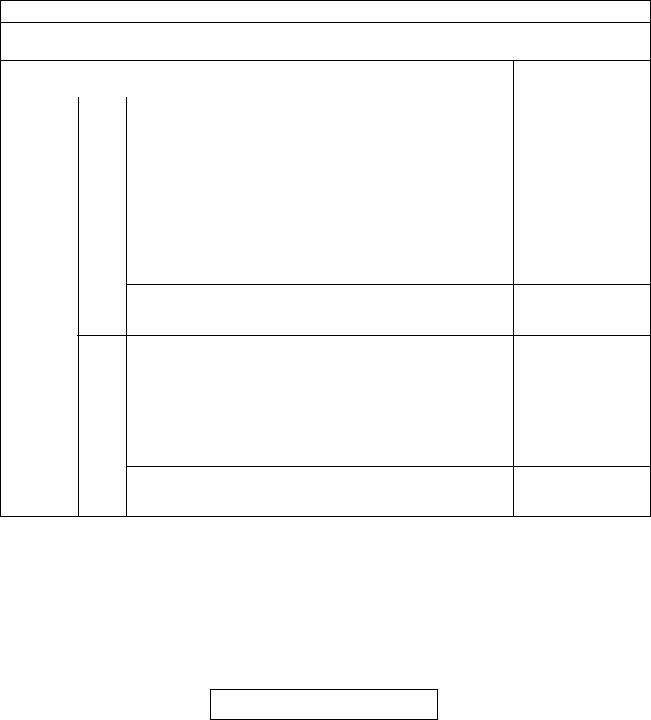
SS-00259 (7th Edition) for General Use
4.3Rules for batteries (Applicable to all batteries in commercial distribution)
4.3.1Definitions of “Battery,” “Battery pack,” and “Button cell” in this Technical Standard
“Battery” means any source of electrical energy generated by direct conversion of chemical energy and consisting of one or more primary battery cells (non-rechargeable) or consisting of one or more secondary battery cells (rechargeable).
“Battery Pack” means any set of batteries that are connected together and/or encapsulated within an outer casing so as to form a complete unit that the end-user is not intended to split up or open.
“Button Cell” means any small round portable battery whose diameter is greater than its height and which is used for special purposes such as hearing aids, watches, small portable equipment and back-up power.
Battery cells used for “Battery packs” shall be compliant with the rules specified in Table 4.4, because they are identified as “Battery.”
For “Batteries” and “Battery packs” follow the standards specified in Section 4.1 and 4.2 also.
Table 4.4 Rules for batteries
Substances: Heavy metals (cadmium, lead, and mercury)
All metals, alloys, inorganic compounds, organic compounds, inorganic salts, organic salts, and other substances that contain cadmium, lead, and mercury
|
|
|
Targets |
Effective date of the |
|
|
|
ban on the delivery |
|
|
|
|
|
|
|
|
|
|
|
Level 1 |
Cd |
- NiCd batteries |
Banned since |
|
|
|
|
|
January 1, 2007 |
|
|
|
|
|
|
|
- |
“Batteries” whose cadmium content, in proportion to the total |
Banned since |
|
|
|
weight of each one, is 20 ppm or more |
January 1, 2008 |
|
|
- “Battery packs” whose cadmium content, in proportion to the |
|
|
|
|
|
total weight of each one, is 20 ppm or more |
|
|
|
|
|
|
|
Pb |
- |
“Batteries“ whose lead content, in proportion to the total |
Banned since |
|
|
|
weight of each one, is 0.4% or more |
January 1, 2005 |
-“Battery packs” whose lead content, in proportion to the total weight of each one, is 0.4% or more
- Carbon zinc batteries and alkaline batteries whose lead content, in proportion to the total weight of each one, is 0.2% or more
Hg - Button cell batteries whose mercury content, in proportion to the total weight of each one, is 2% or more
- The following batteries and battery packs except button cell batteries
“Batteries” whose mercury content, in proportion to the total weight of each one, is 0.0005% or more
“Battery packs” whose mercury content, in proportion to the total weight of each one, is 0.0005% or more
- Carbon zinc batteries and alkaline batteries whose mercury content, in proportion to the total weight of each one, is 0.0001% or more
(*5) The use of those batteries in Argentina has banned since January 29, 2007 in accordance with Argentina regulations on batteries.
(*6) The use of those batteries in China has banned since January 1, 2005 in accordance with the Chinese regulation “1997 Regulation on Mercury Content Limitation for Batteries.”
Copyright 2008 Sony Corporation
- 18 -

SS-00259 (7th Edition) for General Use
APPENDIXES
1.MAJOR CONTROLLED SUBSTANCES, AND EXAMPLES OF APPLICABLE LAWS AND REGULATIONS
2.DETAILS OF MAJOR CONTROLLED SUBSTANCES (TYPICAL EXAMPLES)
-Cadmium and cadmium compounds
-Lead and lead compounds
-Mercury and mercury compounds
-Hexavalent chromium compounds
-Polychlorinated biphenyls (PCB), polychlorinated naphthalenes (PCN), polychlorinated terphenyls (PCT)
-Short-chain chlorinated paraffins (SCCP)
-Polybrominated biphenyls (PBB)
-Polybrominated diphenylethers (PBDE)
-Tributyltin compounds (TBT) and triphenyltin compounds (TPT)
-Asbestos
-Formaldehyde
-Polyvinyl chloride (PVC) and PVC blends
-Beryllium oxide
-Hydrofluorocarbon (HFC), Perfluorocarbon (PFC)
-Perfluorooctane sulfonates (PFOS)
-Specific benzotriazole
Disclaimer: Applicable laws and regulations, and controlled substances in Appendixes 1 and 2 are illustrative only, not all the substances and its alias name are listed.
Copyright 2008 Sony Corporation
- 19 -

SS-00259 (7th Edition) for General Use
1.MAJOR CONTROLLED SUBSTANCES, AND EXAMPLES OF APPLICABLE LAWS AND REGULATIONS
Note: This information is confirmed as of March 2008. The laws and regulations cited herein are subject to change, and it is essential to consult the latest editions of the relevant laws and regulations.
Substances |
Laws and regulations |
|
|
|
|
Cadmium and cadmium |
European Union. EU Directive 76/769/EEC and its amendments. |
|
compounds |
|
|
European Union. EU Directive 91/338/EEC and its amendments. |
||
|
||
|
|
|
|
European Union. RoHS Directive 2002/95/EC and its amendments. |
|
|
|
|
|
European Union. Batteries Directive 2006/66/EC. |
|
|
|
|
|
Switzerland. Ordinance on Risk Reduction related to Chemical Products |
|
|
(ORRChem). |
|
|
|
|
Lead and lead compounds |
European Union. RoHS Directive 2002/95/EC and its amendments. |
|
|
|
|
|
European Union. Batteries Directive 2006/66/EC. |
|
|
|
|
|
Switzerland. Ordinance on Risk Reduction related to Chemical Products |
|
|
(ORRChem). |
|
|
|
|
|
Denmark: Statutory Order No. 1012 and its amendments. |
|
|
|
|
|
Argentina. The Law No.26.184 Portable Power and Resolution 14/2007. |
|
|
|
|
Mercury and mercury |
European Union. RoHS Directive 2002/95/EC and its amendments. |
|
compounds |
|
|
European Union. Batteries Directive 2006/66/EC. |
||
|
||
|
|
|
|
China. 1997 Regulation on Mercury Content Limitation for Batteries. |
|
|
|
|
|
China. Inspection and Management Methods for the Import and Export of |
|
|
Battery Products Containing Mercury. (English translation by EIA) |
|
|
|
|
Hexavalent chromium |
European Union. RoHS Directive 2002/95/EC and its amendments. |
|
compounds |
|
|
Switzerland. Ordinance on Risk Reduction related to Chemical Products |
||
|
||
|
(ORRChem). |
|
|
|
|
Polychlorinated biphenyls (PCB) |
European Union. EU Directive 76/769/EEC and its amendments. |
|
Polychlorinated naphthalenes |
|
|
Japan. Law Concerning the Examination and Regulation of Manufacture, etc. |
||
(PCN) |
||
of Chemical Substances, Class I. |
||
Polychlorinated terphenyls (PCT) |
||
|
|
|
Short-chain chlorinated |
Norway. Regulations relating to restrictions on the use, etc. of certain |
|
paraffins (SCCP) |
dangerous chemicals. |
|
|
|
|
Polybrominated biphenyls |
European Union. EU Directive 76/769/EEC and its amendments. |
|
(PBB) |
|
|
European Union. RoHS Directive 2002/95/EC and its amendments. |
||
|
||
|
|
|
|
Switzerland. Ordinance on Risk Reduction related to Chemical Products |
|
|
(ORRChem). |
|
|
|
|
Polybrominated |
European Union. EU Directive 76/769/EEC and its amendments. |
|
diphenylethers (PBDE) |
|
|
European Union. RoHS Directive 2002/95/EC and its amendments. |
||
|
||
|
|
|
|
Switzerland. Ordinance on Risk Reduction related to Chemical Products |
|
|
(ORRChem). |
|
|
|
|
Tributyltin compounds (TBT) |
Japan. Law Concerning the Examination and Regulation of Manufacture, etc. |
|
Triphenyltin compounds (TPT) |
of Chemical Substances, Class I and Class II. |
|
|
|
|
Asbestos |
Japan. Industrial Safety and Health Law. |
|
|
|
|
|
Germany. Chemicals Prohibition Ordinance. (German abbreviation: |
|
|
ChemVerbotsV) |
|
|
|
|
Specific azo compounds |
European Union. EU Directive 76/769/EEC and its amendments. |
|
|
|
|
Formaldehyde |
Germany. Chemicals Prohibition Ordinance. (German abbreviation: |
|
|
ChemVerbotsV) |
|
|
|
|
|
Denmark: Statutory Order No. 289. |
|
|
|
Copyright 2008 Sony Corporation
- 20 -
